Hi, BugFans,
The BugLady wrote this article for a recent newsletter of the Friends of the Cedarburg Bog (an organization that would love your support).
Slime molds are strange and wonderful life forms that can exist as tiny, single cells, but can also form a mass of cells that acts like an organism – and moves!
Back in the days when fungi (now placed in their own Kingdom) were classified as plants, slime molds were classified with the fungi. Today, slime molds defy exact classification (slime molds can’t be plants because slime molds eat!). They’re placed in a catch-all group that some people call the kingdom Protista, made up of often unrelated single-celled or colonial single-celled organisms that have similar structures and life styles. Australian researcher Chris Reid calls Protists “a taxonomic group reserved for everything we don’t understand.” They’ve been around for a billion years.
They may be so small that they live their whole lives under our radar, moving slowly through the soil; or they may aggregate to form bright yellow or white, spongy blobs on the forest floor, or pink spheres on decaying wood, or tiny, brown cattail shapes on branches. Or, they might start as the first and end as the second. They have great names, like wolf’s milk, tapioca, pretzel, white coral, red raspberry, chocolate tube, dog vomit and scrambled egg slime.
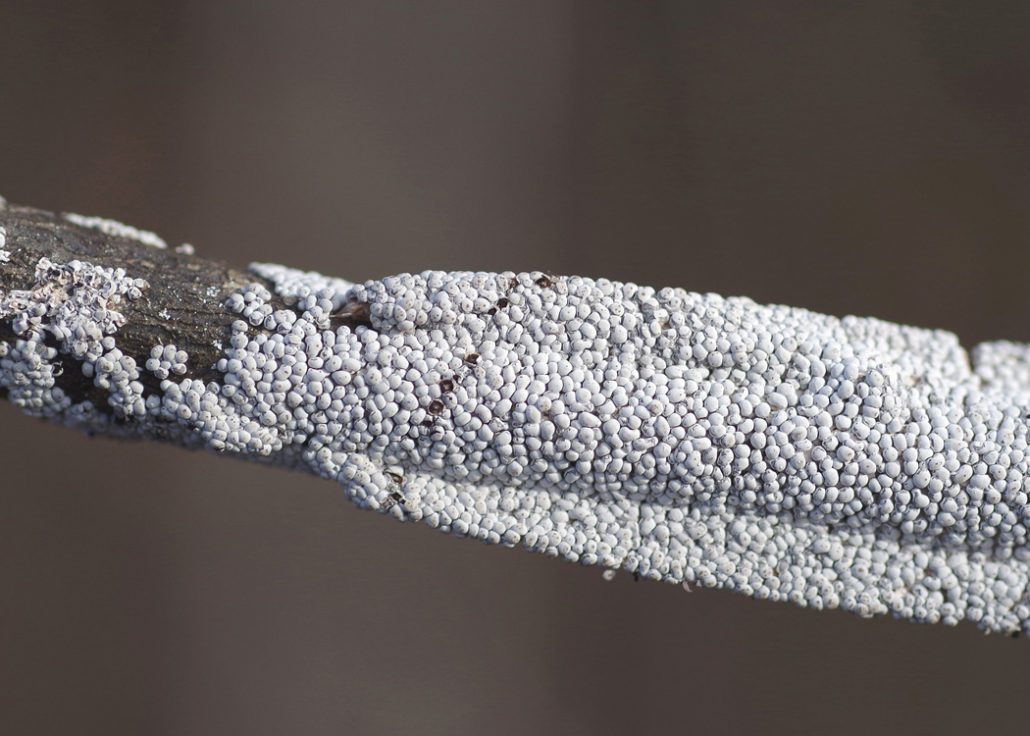
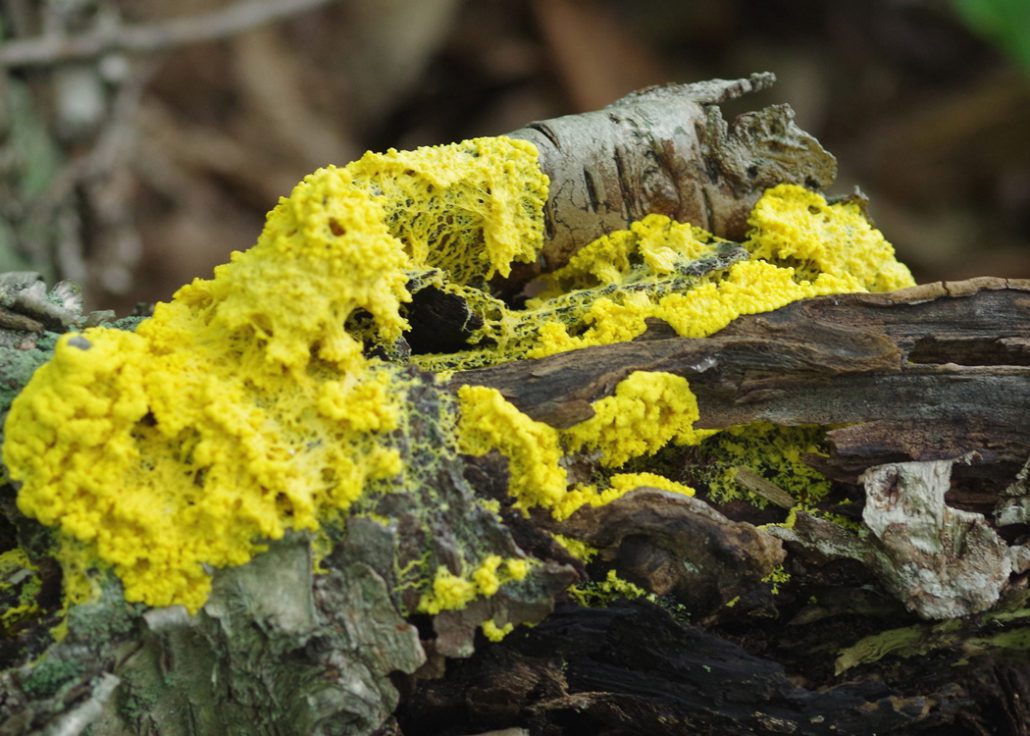
dog vomit slime mold 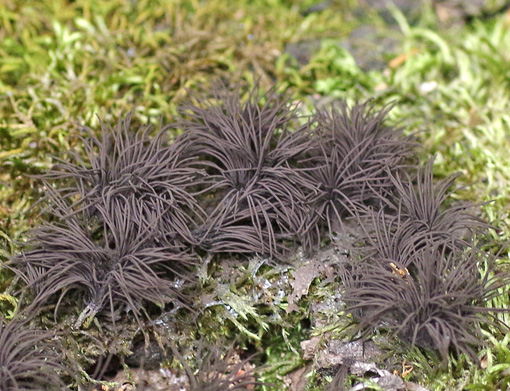
chocolate tube slime 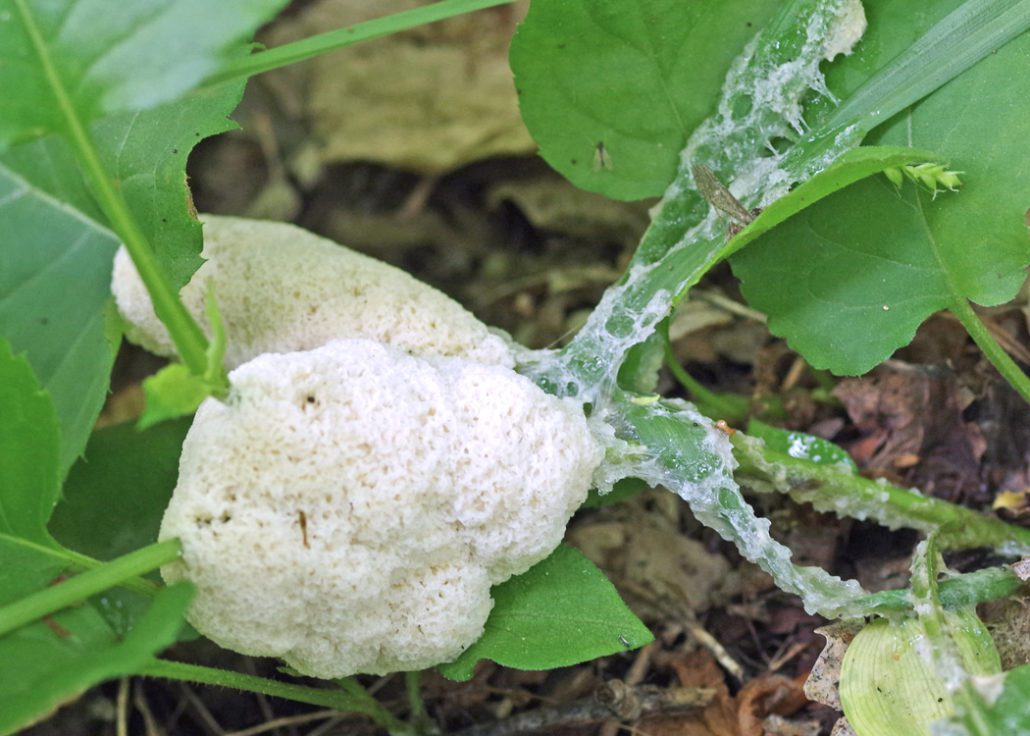
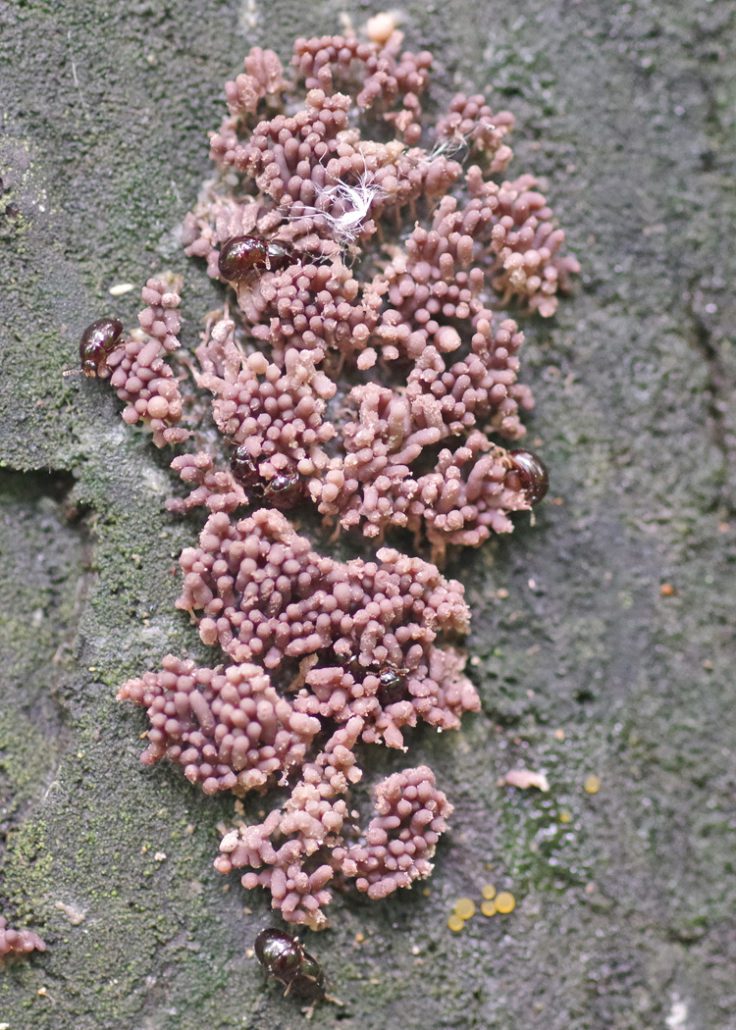
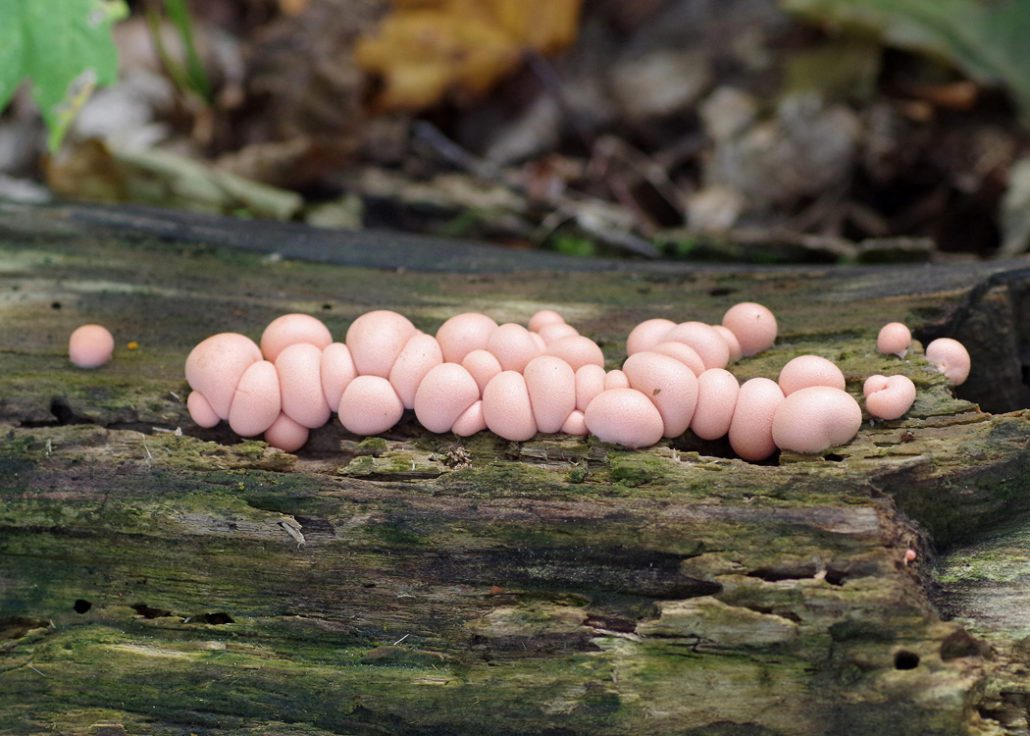
wolf’s milk slime mold 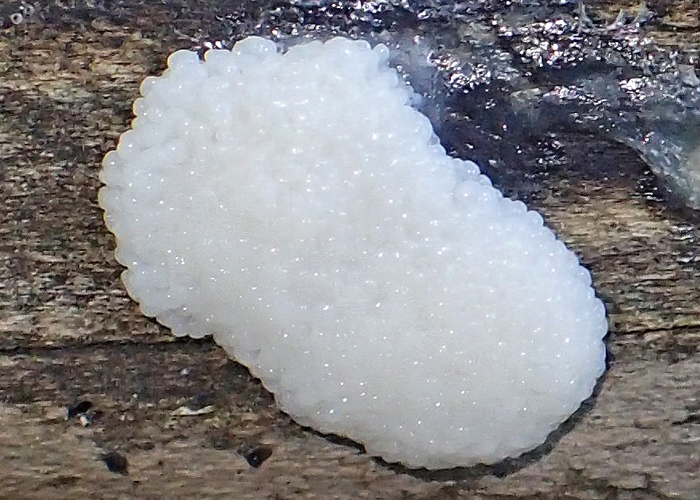
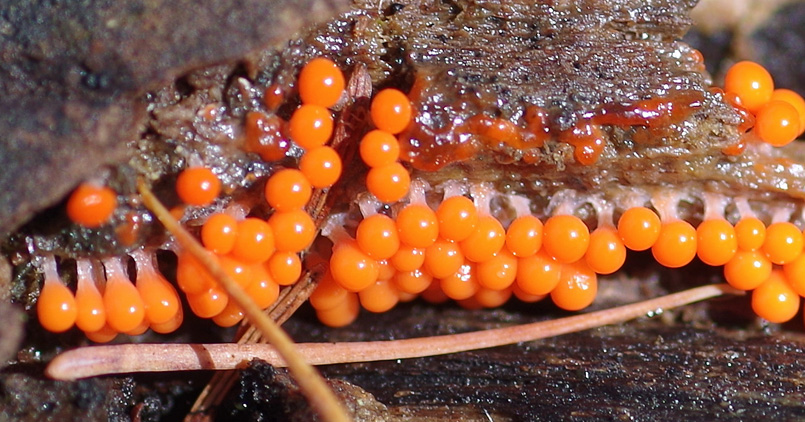
Two of the main groups are the cellular slime molds (Dictyosteliida) and the plasmodial or acellular slime molds (Myxogastria). Both kinds start out as tiny, single-celled amoeba-like critters in soil or rotting material, both can use chemicals to communicate, and both, at some sign from their environment, may congregate and go into reproductive mode, transforming from a single-celled organism to a giant “megacell” (one scientist calls them “a bag of amoebas”). They feed on bacteria, algae, and fungal spores and help organic materials to decompose. They are eaten by many small animals (there are little, shiny, brown beetles apparently feeding – and cavorting – in the pink slime mold), and some are said to be edible by humans.
Their orientation is deliberate; their ability to pick the most direct route to food mimics the efficient layout of expressways and railroad systems; they were the inspiration for the Sci-fi movie “The Blob;” the math that describes their orderly aggregation is applied to video games; and some can anticipate change, learn to solve mazes and remember. And when they are chopped up, they reassemble and remember.
For more information, see
https://www.scientificamerican.com/article/brainless-slime-molds/ and
https://www.pbs.org/newshour/science/the-sublime-slime-mold and
http://www.wisconsinmushrooms.com/.
Kate Redmond, The BugLady
Bug of the Week archives:
http://uwm.edu/field-station/category/bug-of-the-week/
